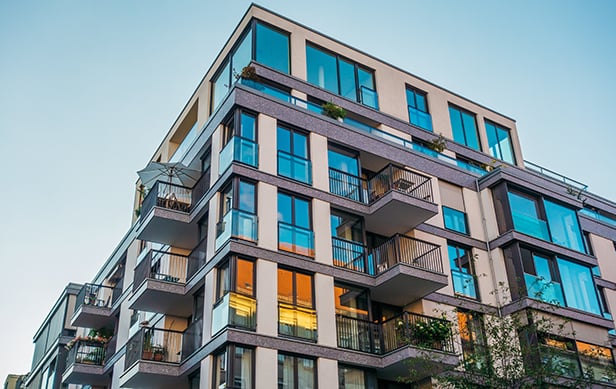(To read more on the multifamily market, click here.)
SAN FRANCISCO-Commercial real estate values grew at an 8% annualized rate in the second quarter of 2006, a marked decline from the previous quarter and the same quarter a year earlier, according to a Value Monitor report released Wednesday by National Real Estate Index, the real estate research publishing arm of locally based Global Real Analytics.
The national average appreciation for the second quarter was 2%, which equates to an annualized gain of 8%. In the first quarter and the second quarter of 2005, national average appreciation was 3.6% and 3.5% respectively, which equates to an annualized gain of 14%.
Moreover, the report notes that the second quarter marked the first time "in years" that the rate of appreciation showed a considerable slowing in every sector. The report also states that many individual markets showed hints of ebbing appreciation and an easing in the volume of transactions.
"We knew there would be a point where things must slow down from prior quarter rates in excess of an annualized 14% rate, and we just might be at that inflection point," says Global Real Analytics COO Jim Sempere. "This doesn't indicate unhealthy real estate markets or that property has lost its appeal as a desirable investment. Rather, the market may be showing healthy signs of easing…a soft landing, if you will."
All property sectors reported an increase in value, just at a lower rate than before, according to the report. However, GRA's research found that only 38% of all markets and sectors reported an increase in the rate of appreciation over the prior quarter. In the first quarter, 57% of all markets reported an increase in the rate of appreciation.
"It's too early to say at this point whether we are seeing the beginnings of a trend. What looks like a moderation may not really be at all," says Daniel O'Connor, GRA's managing director of global forecasting and research. "It could be simply the market pulling back from the furious pace of the last several quarters to one that is more in line with historic standards for a healthy bull market. There still will be appreciation, since market supply/demand fundamentals are becoming more in balance."
While the second quarter showed a considerable slowdown in appreciation, the appreciation over the past year has been impressive. Comparing second quarter values to the same quarter last year, every sector reported healthy gains. Apartments led all sectors with annual appreciation rates of 12.7% and 12.1% for class B and A apartments, respectively. Retail appreciated at a 11.4% clip, warehouses by 10.2%, suburban office by 6.9% and CBD office by 9.7%.
"What happens in the third quarter will be very interesting," O'Connor says. "The economy has slowed somewhat and job formation in recent months has been less consistent. We look forward to seeing to what extent this takes the luster off real estate, if at all."
Taking into account all property sectors, the Florida/Gulf Region continued to lead the pack with 12.8% appreciation. The other markets showing double-digit appreciation across all property sectors were the Mid-Atlantic (12.3%), the Northeast (11.8%), Pacific Southwest (11.2%) and Pacific Northwest (10.5%). The national average was 10.3%.
Breaking down the year-over-year growth by market and sector, Florida still comes out on top. Tampa/St. Petersburg placed first in class A apartments (35.1%). West Palm Beach placed first in appreciation for class B apartments (22.4%) and CBD office (25.4%) and third for appreciation in suburban office (23.9%). Jacksonville placed second in both suburban office (24.6%) and warehouse (21.7%). Miami placed second in class B apartments (22.4%). Orlando placed second in class A apartments (24,2% appreciation), fifth in class B apartments (21.2%) and fifth in CBD office (19.5%). Ft. Lauderdale placed third in class B apartments (21.8%), fifth in class A apartments (23.2%) and fourth in CBD office (19.5%).
The only non-Florida market to place in the top five in more than one property sector was Washington, DC, which placed third in class A apartments (24% appreciation) and fourth in class B apartments (21.5%). Only one Florida market placed in the top five in the retail and warehouse sectors. Retail was led by San Francisco and Honolulu, with 23.3% and 22.7% appreciation, respectively, while warehouse was led by Philadelphia (23.4%) and Jacksonville (21.7%).
Continue Reading for Free
Register and gain access to:
- Breaking commercial real estate news and analysis, on-site and via our newsletters and custom alerts
- Educational webcasts, white papers, and ebooks from industry thought leaders
- Critical coverage of the property casualty insurance and financial advisory markets on our other ALM sites, PropertyCasualty360 and ThinkAdvisor
Already have an account? Sign In Now
© 2024 ALM Global, LLC, All Rights Reserved. Request academic re-use from www.copyright.com. All other uses, submit a request to [email protected]. For more information visit Asset & Logo Licensing.








